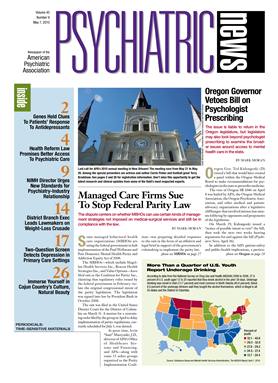Ah, the “bad guy” is thinking, “I'm going to take that sucker for all he's worth.”
What's going on in his brain? His brain's reward center—the nucleus accumbens—may be goading him into action, a new study suggests.
The study found a link between the personality trait of psychopathy and an overly responsive nucleus accumbens.
Joshua Buckholtz, a doctoral candidate in neuroscience at Vanderbilt University, headed the study. Results were reported online March 14 in Nature Neuroscience.
The personality trait of psychopathy is characterized by charm, egocentricity, manipulation of others, sensation-seeking, poor reflection, and blunted empathy. Psychopathy in turn is a robust predictor of antisocial behavior.
Moreover, alcohol, nicotine, and many other drugs of abuse are known to stimulate the nucleus accumbens, and psychopathic individuals are known to be at heightened risk for developing substance abuse problems. So Buckholtz and his colleagues suspected that there might be a link between the personality trait of psychopathy and the nucleus accumbens. They conducted a study to find out.
They recruited 24 community volunteers and used the Psychopathic Personality Inventory, a validated measurement of psychopathy, to determine how each subject scored on a subdomain of the trait called “impulsive antisociality.” This subdomain in turn has been linked with antisocial behavior, aggression, impulsivity, and substance abuse both in prison and community samples.
In a first experiment, the subjects were given an amphetamine, which is known to increase levels of the neurotransmitter dopamine in the nucleus accumbens. After that, PET scans were used to measure the amount of dopamine released in the nucleus accumbens of each subject. The researchers looked to see whether there was any correlation between how high subjects had scored on impulsive antisociality and the amount of dopamine released in their nucleus accumbens.
The higher subjects had scored on impulsive antisociality, the more dopamine they released. In fact, when the highest-scoring subjects were compared with the lowest-scoring ones, the former released four times more dopamine in the nucleus accumbens than the latter did.
In a second experiment, the subjects played a game in which they could win a cash reward. While they were playing the game, fMRI scans were used to see how much dopamine was released in their nucleus accumbens. The higher subjects had scored on impulsive antisociality, the more dopamine they released.
So the combined results from both experiments appear to indicate that people who score high on impulsive antisociality possess an especially responsive nucleus accumbens, or reward system.
But what do these findings mean in practical terms? One possibility is that people with an especially responsive reward system might be aggressive about obtaining whatever they consider rewarding, whether it is drugs, sex, money, or something else. Indeed, rodent studies have shown that dopamine is released from the nucleus accumbens during aggressive behavior, and aggressive behavior is common among antisocial or psychopathic individuals.
Although Buckholtz and his group believe that they've taken an important first step in linking impulsive antisociality to an exaggerated dopamine response in the nucleus accumbens, they now hope to confirm their results in subjects who have been diagnosed as having antisocial personality disorder.
And if they manage to do so, then an especially responsive reward system might be considered one of the biological hallmarks of antisocial individuals, just as deficits in the prefrontal cortex and amygdala already are (Psychiatric News, April 5, 2002; October 16, 2009).
The study was funded by the National Institute on Drug Abuse.

